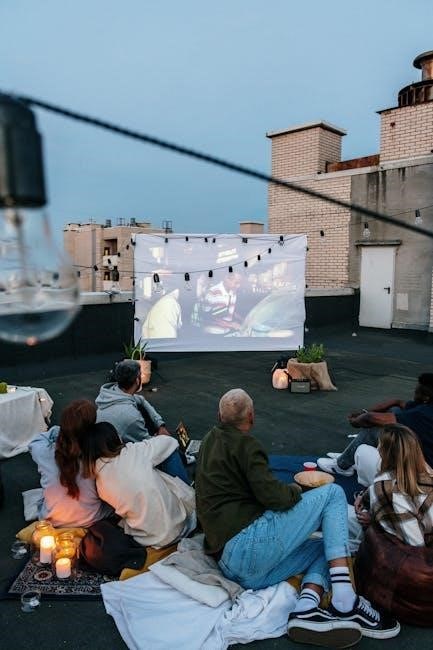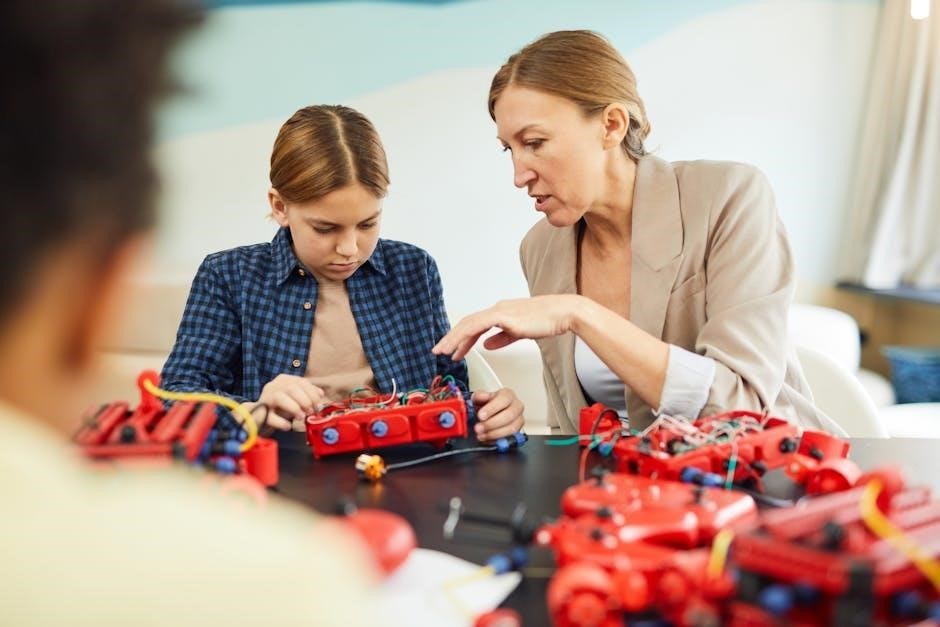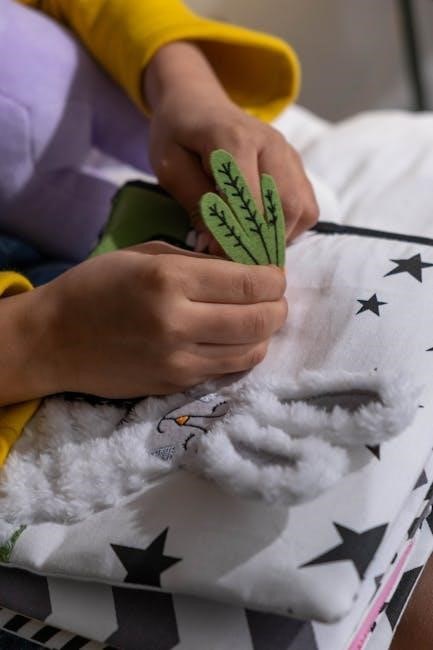
project linus blanket instructions
Project Linus is a nonprofit organization providing handmade blankets to children in need, offering comfort and warmth through knitted, crocheted, or sewn creations by volunteers nationwide.
Purpose and Mission
Project Linus is a nonprofit organization dedicated to providing handmade blankets to children in need. Its mission is to offer comfort, warmth, and a sense of security through knitted, crocheted, or sewn creations. Volunteers craft these blankets, which are then distributed to children in hospitals, shelters, and other challenging situations. The organization fosters a sense of community and compassion, ensuring every child feels cared for and valued.
Materials and Supplies Needed
Project Linus requires soft, clean materials like yarn, fabric, and threads. Essential tools include knitting needles, crochet hooks, scissors, and sewing machines for crafting blankets.
Suggested Fabrics and Yarns
Soft, medium-weight fabrics like cotton, fleece, or flannel are ideal for Project Linus blankets. Acrylic yarns are recommended for knitted or crocheted blankets due to their durability and softness. Avoid scratchy or thin materials to ensure comfort. Choose vibrant, child-friendly colors and patterns to make the blankets appealing. Ensure all fabrics and yarns are clean and free of allergens before use.
Tools and Notions Required
Knitting needles (US 8-10) or crochet hooks (H/5mm-I/5.5mm) are essential for knitted or crocheted blankets. Sewists will need a sewing machine, rotary cutter, and mat for precise fabric cutting. Scissors, tape measures, and seam rippers are universal tools. Yarn needles are useful for weaving ends. Stitch markers can help track patterns. Quilting hoops or batting are optional for quilted blankets. Ensure all tools are in good condition to create durable, high-quality blankets for children.

Types of Blankets for Project Linus
Project Linus accepts knitted, crocheted, sewn, and quilted blankets, all made with love to provide comfort and security to children in need across the country.
Knitted Blankets
Knitted blankets are a popular choice for Project Linus, offering warmth and comfort to children in need. They can be created by crafters of all skill levels using knitting needles and yarn. Simple or intricate patterns are welcomed, as long as they adhere to Project Linus guidelines. Knitted blankets provide a cozy, personal touch, making them a heartfelt contribution to the organization’s mission of providing security and comfort to children nationwide.
Crocheted Blankets
Crocheted blankets are a beloved contribution to Project Linus, crafted with love and care using crochet hooks and yarn. They are suitable for crafters of all skill levels, from beginners to seasoned artisans. Simple or intricate patterns are both welcome, as long as they meet Project Linus guidelines. Crocheted blankets offer a soft, cozy, and durable option for children in need, providing warmth and a sense of security that can bring comfort during challenging times.
Sewn Blankets
Sewn blankets are a popular choice for Project Linus contributors, offering a versatile and customizable way to create comforting gifts for children in need. Using a sewing machine or by hand, crafters can piece together fabric squares or strips, creating unique and cozy designs. Sewn blankets are ideal for those who enjoy working with fabric and can be made in various sizes and patterns, adhering to Project Linus guidelines to ensure quality and comfort for recipients.
Quilted Blankets
Quilted blankets are a heartwarming contribution to Project Linus, combining layers of fabric with batting for extra warmth and comfort. These blankets often feature intricate stitching and patterns, making each one unique; Quilters can use pre-made patterns or design their own, ensuring the finished product meets Project Linus size and material guidelines. The quilting process allows for creativity while providing a durable, long-lasting blanket for children in need.

Patterns and Tutorials
Project Linus provides a variety of patterns and tutorials for knitted, crocheted, sewn, and quilted blankets, guiding crafters of all skill levels to create comforting donations.
Recommended Patterns for Beginners
Beginners can start with simple scarf, square, or baby blanket patterns. These projects require basic stitches and minimal materials, making them ideal for skill development. Use soft, medium-weight yarns or fabrics like fleece or flannel; Tools include basic knitting needles, crochet hooks, or sewing machines. Patterns like garter stitch scarves or single-crochet blankets are great for practice. Tutorials on YouTube and Project Linus websites offer step-by-step guidance. These projects help build confidence while creating something meaningful.
Advanced Patterns for Experienced Crafters
Experienced crafters can explore intricate patterns like cables, Fair Isle knitting, or complex crochet motifs. These designs add visual interest and challenge. Use premium yarns or fabrics for a polished finish. Patterns like lace shawls, mosaic quilts, or textured blankets showcase skill. Ensure durability and washability, as blankets are for children. Advanced techniques allow for creative expression while adhering to Project Linus guidelines.

Construction Guidelines
Ensure blankets are well-constructed, durable, and finished neatly. Follow size and material guidelines for comfort and safety. Proper seaming and edging are essential for longevity.
Size Requirements
Blankets should range between 30×40 inches for infants to 40×60 inches for older children. Ensure sizes are appropriate for the recipient’s age and needs. Avoid overly large blankets for safety. Check local chapter guidelines for specific size preferences to meet community demands effectively. Consistent sizing ensures blankets are practical and comfortable for children in various situations, making them ideal for distribution.
Finishing Techniques
Ensure all seams are secure and edges are neatly finished. For knitted or crocheted blankets, weave in yarn ends. Sewn blankets should have seams reinforced. Quilted blankets may require binding for a polished look. Avoid loose threads or fraying. Consider adding a simple border for durability. These finishing touches ensure blankets are safe, comfortable, and long-lasting for children. Proper completion enhances the overall quality of the blanket.

Donation Process
Project Linus accepts donations through local chapters. Locate your nearest chapter or drop-off location to deliver handmade blankets. Shipping options may also be available.
Locating Local Chapters
To find your local Project Linus chapter, visit their official website and use the chapter locator tool. Contact regional coordinators or check event listings for meetings and drop-off locations. Many chapters, like the Greater Pittsburgh Area or NRV-Radford, host monthly collection days or events; Attend these to connect with volunteers and learn more about their specific needs and guidelines for blanket donations.
Drop-Off Locations and Scheduling
Drop-off locations for Project Linus blankets vary by chapter. Many chapters, like the Greater Pittsburgh Area, host monthly collection days at specific sites, such as libraries or sewing shops. Check the official Project Linus website for local chapter details. Some chapters, like NRV-Radford, schedule drop-offs at locations like Sew Biz parking lot on the second Saturday of each month. Contact local coordinators or visit event listings for exact times and locations to ensure smooth donations.

Care and Maintenance
Proper care ensures longevity. Wash blankets in mild detergent, avoiding harsh chemicals. Air dry to prevent shrinkage. Store in clean, dry spaces to maintain quality and comfort.
Washing Instructions
Inspect blankets for stains before washing. Use mild detergent and cold water on a gentle cycle. Avoid fabric softeners or bleach. Air dry to prevent shrinkage and maintain softness. Ensure blankets are clean and dry before donating. Check for loose threads or repairs after washing to ensure quality and durability for the children who will receive them.
Storage Tips
Store blankets in a clean, dry, and cool environment to maintain quality. Use breathable containers like cotton bags or cardboard boxes with ventilation. Avoid direct sunlight to prevent fading. Fold blankets neatly or roll them to save space and reduce creases. Consider using acid-free tissue paper for long-term storage. Ensure blankets are completely dry before storing to prevent mildew or odors. Keep them away from pets and pests to preserve condition.

Sharing Your Experience
Share your Project Linus journey by documenting and posting photos of your blankets on social media, using hashtags to inspire others and spread awareness about the cause.
Photographing and Documenting Your Project
Photograph your blanket in good lighting, using a simple background to highlight the fabric and stitching. Capture close-up details and a full view to showcase your craftsmanship. Document the process, from selecting materials to completion, to share your creative journey. Consider adding a brief story or dedication to make it personal. Sharing photos helps inspire others and highlights the love behind each blanket.
Sharing on Social Media
Share your Project Linus journey on platforms like Facebook, Instagram, or Twitter. Post photos of your blanket, use hashtags like #ProjectLinus, and tag your local chapter. Include a brief story about your project to inspire others. Sharing your efforts helps spread awareness and encourages more people to join. Tagging Project Linus’s official accounts can also connect you with a wider community of crafters dedicated to this meaningful cause.
Project Linus brings warmth and comfort to children through handmade blankets. Each stitch represents care and kindness, making a difference in young lives across the nation.
Final Thoughts and Encouragement
Creating blankets for Project Linus is a meaningful way to make a difference in the lives of children. Every stitch and thread represents love and care. Whether you knit, crochet, or sew, your contribution brings comfort and hope. Encourage others to join in this rewarding endeavor. Together, we can wrap countless children in warmth and love, one blanket at a time. Keep crafting with kindness!